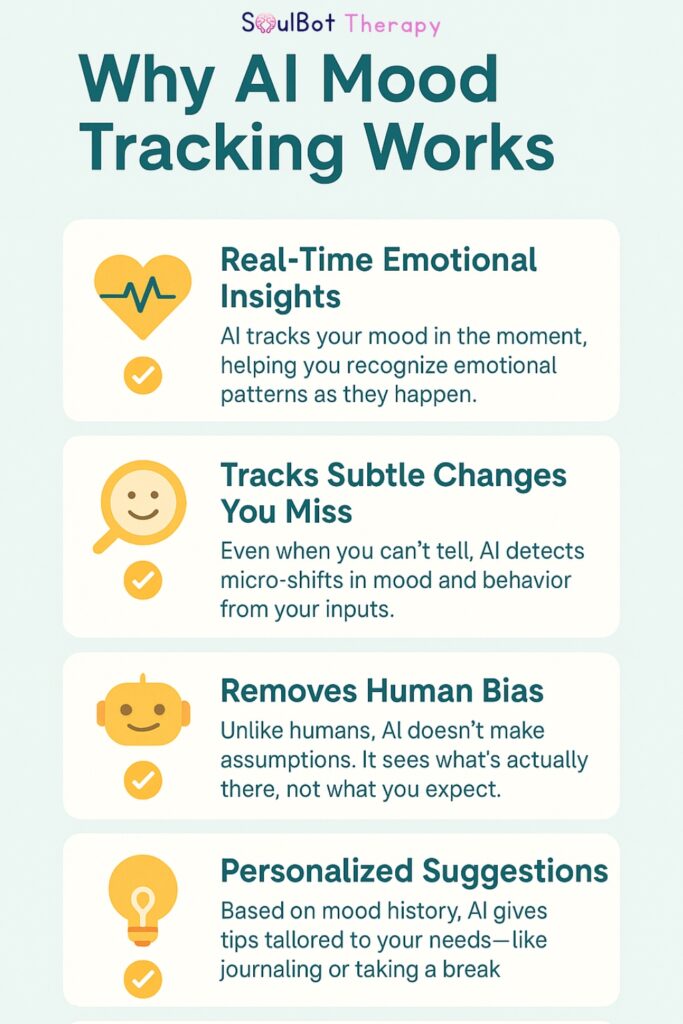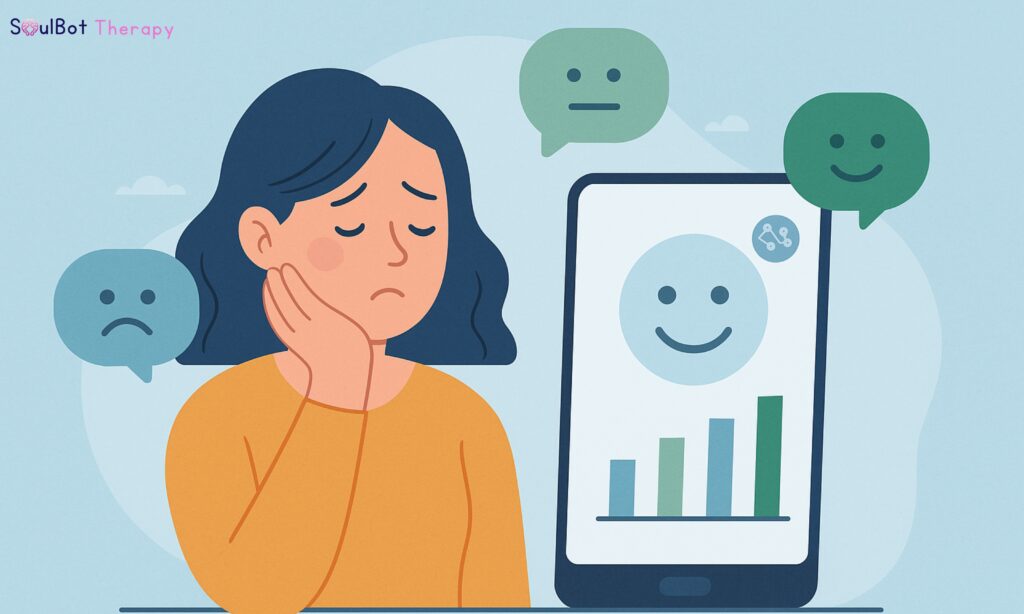Imagine being able to predict your next anxiety spiral before it hits. That’s what AI mood tracking is helping thousands of people do every day. More than just a journal, it’s a powerful emotional radar backed by real data, psychology, and technology.
In this guide, we’ll break down how mood tracking AI works, why it’s a game-changer for anxiety management, and how SoulBot, your AI Mental Health Companion, can support your mental wellness journey in real-time.
📊 Did You Know?
According to the National Institute of Mental Health, tracking mood and emotional patterns regularly can lead to earlier anxiety intervention and better treatment outcomes.
🤖 What is AI Mood Tracking?
AI mood tracking uses artificial intelligence to monitor, analyze, and interpret emotional patterns over time. Unlike traditional journaling, it uses behavioral inputs, mood logs, sentiment analysis, and pattern recognition to offer actionable insights and emotional predictions.
Whether it’s analyzing your language, check-in timing, or emotional intensity, AI can detect subtle shifts that you might miss.
🧠 How AI Mood Tracking Helps Reduce Anxiety?
- Identifies Emotional Triggers: AI tracks recurring thought patterns and events that correlate with anxiety spikes, helping you spot and reduce exposure to triggers.
- Offers Real-Time Mental Health Support: With tools like SoulBot, AI doesn’t just track it supports. Get instant calming prompts, guided reflection, and breathing exercises based on your current mood.
- Builds Emotional Awareness: Regular use improves emotional literacy, helping you name, understand, and regulate feelings instead of getting overwhelmed by them.
- Prevents Emotional Overload: AI flags mood shifts early, allowing for intervention before full-blown anxiety episodes take over.
📈 AI Mood Tracking vs. Traditional Mood Journaling
| Traditional Journaling | AI Mood Tracking Tools |
|---|---|
| Manual entry + inconsistent logs | Automated analysis + regular reminders |
| Subjective and limited insights | Data-driven patterns + emotional predictions |
| No expert feedback or guidance | Built-in AI therapy support + coping tools |
| Time-consuming | Streamlined and intelligent user experience |
💬 Real-World Use: How Maya Beat the Spiral
Maya, a college student, used SoulBot’s AI mood tracking every night. Over time, she noticed her anxiety peaked on Sundays. The AI helped her trace this to assignment overload and poor sleep. She began pacing her tasks better, sleeping early, and using SoulBot’s Sunday calming routines. Her anxiety scores dropped within a month.

🧬 Why It Works: The Psychology Behind It
AI mood tracking aligns with Cognitive Behavioral Therapy (CBT) principles: awareness leads to behavior change. When users understand their emotional triggers and thought loops, they’re better equipped to challenge them.
SoulBot offers data-backed support through natural language processing (NLP), sentiment analysis, and AI emotion tracking. It’s not just journaling, it’s self-awareness on autopilot.
🧠 Final Thought: Awareness Is Power, And AI Makes It Possible
You don’t have to wait for anxiety to spiral out of control. With AI-powered mood tracking, you can see the signs, change course, and breathe easier.
Let SoulBot be your AI Therapist, guiding you toward emotional clarity day by day without pressure or judgment.
👉 Start tracking your mood with SoulBot today and take control of your anxiety.
🔗 More from SoulBot
Share this with someone ready to take back control of their mental health.








